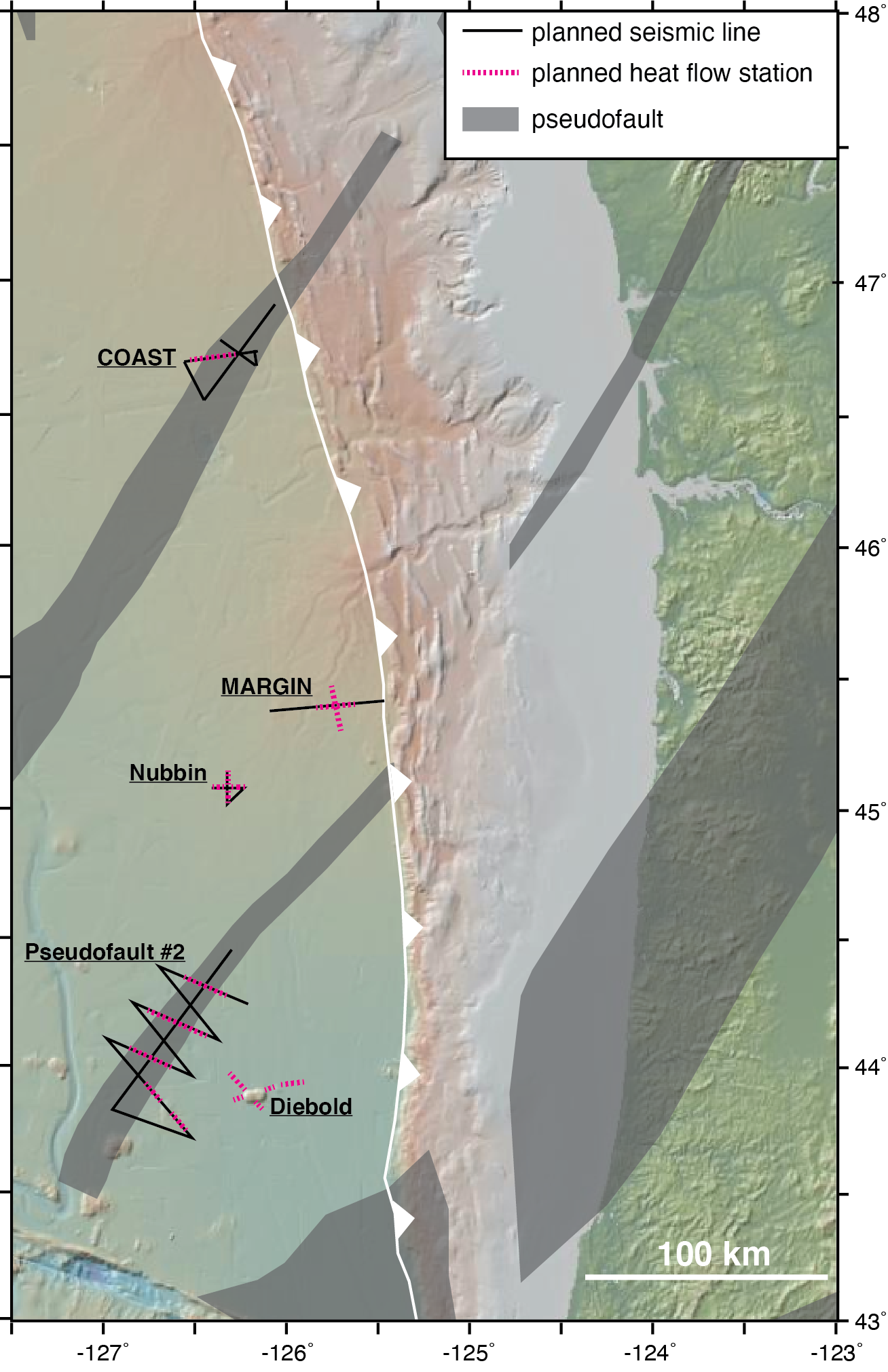
CHINOoK: Cascadia Hydrothermal circulation IN Oceanic (K)rust
Home About Team Blog (2022 cruise) Blog (2024 cruise)

Accurate estimates of subduction zone temperatures are required to understand a variety of critical processes, including controls on seismogenic and aseismic behavior on subduction megathrusts. For the Cascadia subduction zone, the dearth of instrumentally recorded interplate seismicity requires a reliance on indirect methods (including temperature) to estimate the extent of the seismogenic zone. The extent to which fluid circulation redistributes heat within the subducting plate has profound implications for temperature distributions in the Cascadia subduction zone. In Cascadia, a lack of heat flux data immediately seaward of the trench is a significant knowledge gap for understanding subduction zone temperatures. This study will fill this hole by collecting ~600 km of seismic reflection lines and ~200 heat flux measurements at 5 sites offshore Washington and Oregon with a focus on quantifying the extent and vigor of hydrothermal circulation in the Juan de Fuca plate. Hydrothermal circulation associated with basement relief generates large anomalies in heat flux across the seafloor; this signal provides a test for the presence of hydrothermal circulation. Combining data from multiple sites will provide information on whether hydrothermal circulation is local or regional.

The central hypotheses are:
1) Hydrothermal circulation is ubiquitous in the upper oceanic crustal aquifer; it persists in the aquifer covered by a thick mantle of sediment near the deformation front and in the shallowly subducted crust; and
2) Pseudofaults along propagator wakes are zones of high permeability through the full thickness of the crust; thus, they are zones of enhanced fluid and heat circulation relative to areas outside of propagator wakes.
Comparisons of mean heat flux values with those predicted from lithospheric cooling models will allow assessment of whether heat in addition to the basal heat flux is added to the system (e.g., heat transported seaward through the subducting oceanic crust and/or heat advected upwards through faults in propagator wakes). Analyzing and interpreting the controls on the thermal state of the Juan de Fuca plate near the deformation front will allow for the development of improved predictive models of subduction zone temperatures.